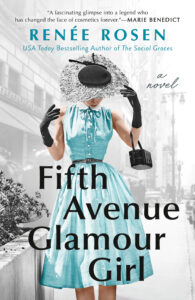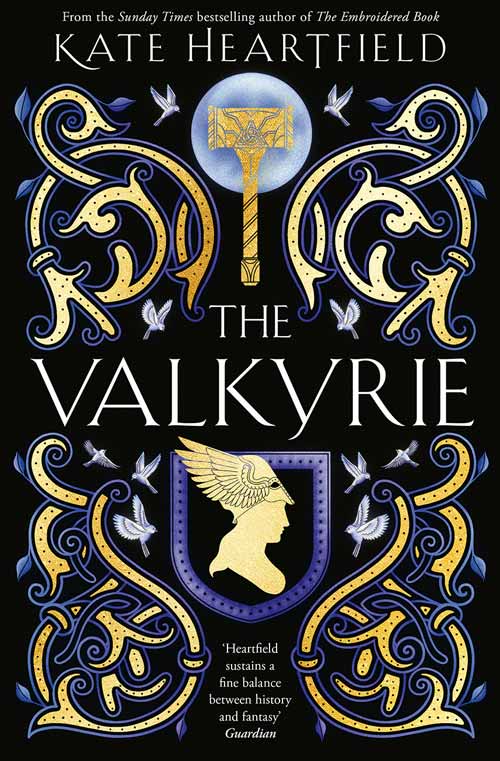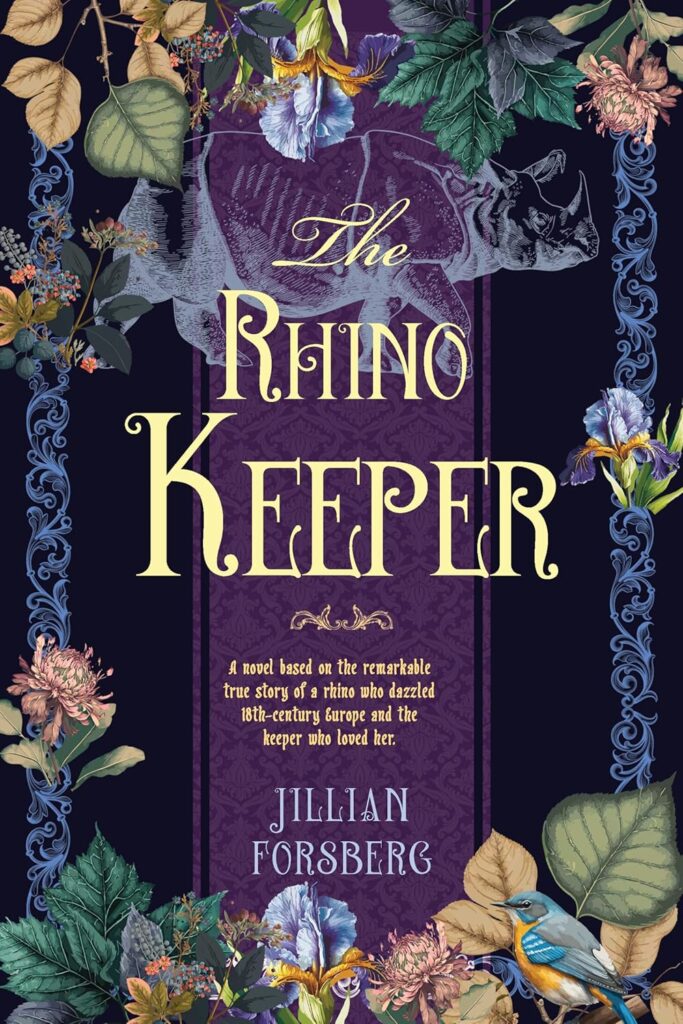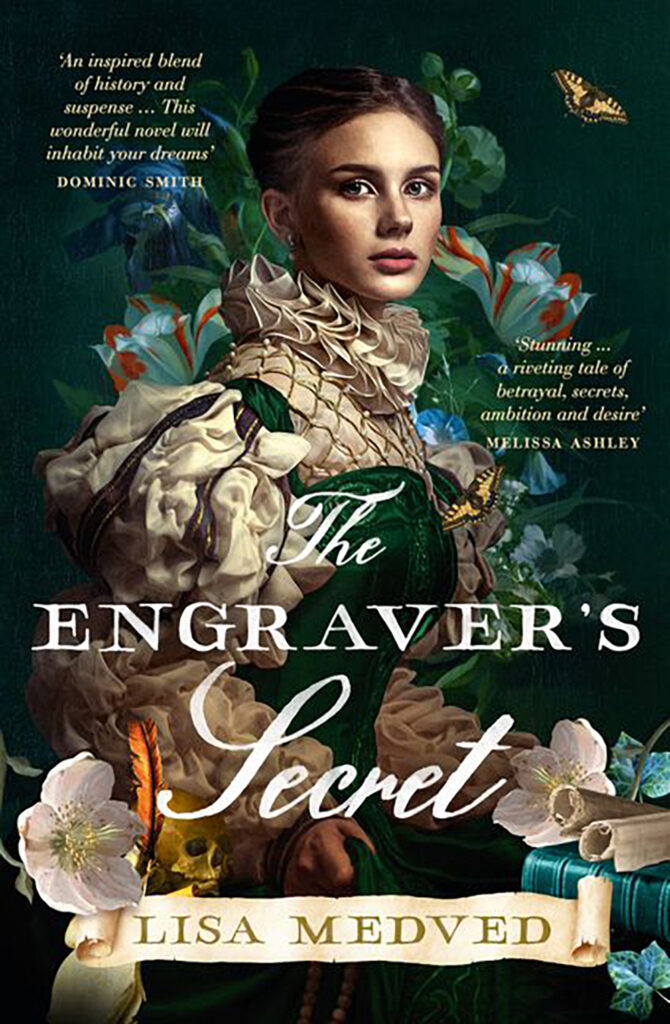It Takes a Village to Write a Book: A Conversation with Renée Rosen
WRITTEN BY TRISH MACENULTY
 The author of seven successful historical novels and an acclaimed young adult novel, Renée Rosen believes it takes a village to write a book. The idea for her most recent novel, Fifth Avenue Glamour Girl (Berkley, 2023), came from a conversation she had with a friend, a filmmaker who had recently completed a documentary about the son of cosmetic icon Estée Lauder. Her friend suggested that Estée Lauder would make a fascinating subject for a novel.
The author of seven successful historical novels and an acclaimed young adult novel, Renée Rosen believes it takes a village to write a book. The idea for her most recent novel, Fifth Avenue Glamour Girl (Berkley, 2023), came from a conversation she had with a friend, a filmmaker who had recently completed a documentary about the son of cosmetic icon Estée Lauder. Her friend suggested that Estée Lauder would make a fascinating subject for a novel.
“I took one look at Estée Lauder’s Wikipedia page and realized she was right,” Rosen said in a Zoom interview. Estée Lauder has all the characteristics of a Rosen heroine. At the end of her life, she had amassed a fortune of more than 200 million dollars, but she started out as an underdog who struggled against enormous odds to achieve success.
“I gravitate towards women who are dynamic, whether historical or people I meet in my own life,” Rosen said. “I’m inspired by the way they overcome adversity using their wits, strength, and determination.”
In telling Lauder’s story, Rosen created a fictional character to be the lens through which we see the future cosmetic mogul climb the ladder of success. “Estée’s story was already out there,” Rosen explained. “A lot has been written about her, including an autobiography and an unauthorized biography. Bringing in a fictional character allows me to make it fresh and to explore different themes.”
The fictional character Rosen created for Fifth Avenue Glamour Girl is Gloria Downing, a young woman who grew up wealthy only to find herself broke and abandoned by her family after her father’s Ponzi scheme is exposed. Gloria’s story drives the book forward as she tries to find herself in a society that has turned against her. “She’s like a mirror for Estée,” Rosen said. “And she was a blast to write. She came to the page fully formed, a gift from the writing gods. When her father falls from grace, this helpless little rich girl has to make peace with that and find a way to survive.”
Estée has the drive to succeed, and Gloria brings a sense of style, developed over the course of her life. Together the two women navigate the shoals of a society that shuns Jews and daughters of disgraced tycoons. But writing about historical figures entails challenges – especially when that person has living descendants. Rosen noted that when writing a historical figure, you should portray the person as accurately as possible. “As a writer your intent has to be your compass,” she said. “Dealing with someone like Estée Lauder, who has such a legacy, you better make sure what you’re writing is documented.”
“I wanted to portray the full woman, warts and all. Estée wasn’t perfect, but she was inspirational,” Rosen said. “You just really have to do your research and stay as close as can to the real figure.”
However, fiction writers also have a duty to their readers, she said. “We’re not writing narrative nonfiction, we’re writing fiction. Our job is to entertain and to tell a compelling story, and we can’t lose sight of that. We may need to take creative license here and there.” Rosen said that an author’s note is crucial to let readers know where you have embellished the story.
While Rosen had some obvious sources for her research on Estée Lauder, creating her fictional character’s arc entailed a different level of research. The scenes, especially in Saks Fifth Avenue, come across as so authentic, I wondered if Rosen had actually worked in a department store.
She hadn’t, but because she had written a novel about department store tycoon Marshall Field in one of her earlier books, What the Lady Wants (Berkley, 2014), she already knew certain things about that world, such as “that counterspace was priceless real estate.”
“I also talked to people who worked in the cosmetic industry and learned how cutthroat it is with the salesgirls. Talking to people gave me some real insight into how that industry works. I also did a lot of research on the early days of Saks, how their buying department worked, what it meant to be a cosmetic buyer for Saks Fifth Avenue,” she said.
Rosen noted that, unlike some historical fiction authors, she does all her own research. Sometimes a small piece of information can illuminate the world she is building. “Those little nuggets that you find doing your research – it could just be a line or a reference – can send you down a rabbit hole. Eventually you start to piece it all together,” she said. Some research, of course, she simply draws from life.
“When I’m writing in the zone, I’m Gloria, I’m Estée,” she said. “I hear the piped-in music, the clacking of heels on the marble floors. Department stores are so different now, but I have great memories of going shopping with my mother, sister, girlfriends. There’s an art of shopping, of bonding that is lost.”
To create momentum and an entry for the story, Rosen incorporated the race to publication of Lee Israel’s unauthorized biography and Estée Lauder’s autobiography. The book begins with Israel contacting Gloria to get dirt on Gloria’s old friend. “It was a good way to get into the story because what was going to trigger Gloria to go back in time?” Rosen said. “You always have to find your jumping-off point. You find that right corner and then you’re off.”
Rosen believes there’s a lesson in Estée’s story for all of us. “I wanted to celebrate all she accomplished. She was such a trailblazer. She was determined, and she wasn’t going to let anybody or anything stand in her way,” she said. “She was tough and she was driven. I want the reader to walk away feeling inspired. She made it with her own gumption and determination.”
Rosen’s own journey as an author of historical fiction has also had its obstacles. She said she always knew she wanted to be a writer, but success didn’t immediately land in her lap. As a child, she was always “working on a short story or a play or a poem,” and she wrote her first novel in high school, but she admits she wasn’t a big reader until her late teens.
“I was not a strong reader. I was a terrible speller. I knew nothing about grammar, but I believed in the power of storytelling,” she said. (These days she’s always got one physical book, one digital, and one audio book going.)
Her belief in storytelling fueled her desire to be a writer. Her first book, a coming-of-age YA novel, Every Crooked Pot (St. Martin’s Griffin), came out in 2007. After that book was published, Rosen said she couldn’t sell another book, and she took a six-year hiatus to figure out her next move. She always had a love for “older things,” and she was fascinated by flappers. So she wrote her first historical novel, titled Dollface (Berkley, 2013) about a flapper in 1920s Chicago. “I don’t think I even realized at the time that historical fiction was a genre,” she said.
After the success of Dollface, her editor at Berkley suggested she write another historical fiction set in Chicago, which led to her book about Marshall Field’s. One of her most popular books, The Social Graces (Berkley, 2021), deals with the rivalry between Alva Vanderbilt and Caroline Astor.
“That was one of the most difficult books to write. We had just come off Park Avenue Summer, and I was talking with my agent and my editor about what to write next. The next day I got two emails, one suggesting I write about Consuelo Vanderbilt, and the other saying, what about the Gilded Age,” she said. “In doing my research, Caroline and Alva just leapt out at me, both vying for control.”
Rosen found the material so rich, she thought the book would write itself. Instead, she said, she struggled and ended up writing it top to bottom three times before the characters came alive.
Readers are drawn to her books, Rosen believes, because of the subjects she chooses. “I try to find a subject matter that immediately has some recognition — Vanderbilts, Astors, Helen Gurley Brown, Estée Lauder,” she said. “It’s so much better if I have that big hook. Hopefully, when readers get there, they appreciate the writing style.” Her current work in progress is a book about Ruth Handler, the woman who invented Barbie.
“In terms of craft, it’s almost a mystical process. I know I’ve connected with the characters when they take over,” she said. Rosen doesn’t outline. She said she has no idea where she’s going from one page to the next. “The first draft is me getting to know the characters,” she said. Once the characters “click,” then the novel begins to take shape.
Rosen loves the process of revision, saying that’s where “the magic” happens. It’s also where the village, or the writer’s team, comes in. “I tell my agent, my editor and my critique partners to give it to me straight. Let’s make it the best book we can,” she said. Rosen said that as writers, we need a network of support both personally and professionally.
“I’m lucky I get to have the characters talking in my ear, but after that, it’s everyone’s baby.” She wants writers to know the struggle is worth it. “Our business is not easy. I was rejected over 300 times by agents before I was able to get my team together,” she said. “I didn’t think I would be in my 40s before I would see a book published. If you love the craft, you stick with it and eventually you’ll get there.”
About the contributor: Trish MacEnulty is the author of the Delafield & Malloy Investigation Series, set in Manhattan in the 1910s. Her historical YA novel, Cinnamon Girl, is forthcoming in the Summer of 2023 from Livingston Press.
Published in Historical Novels Review | Issue 104 (May 2023)






